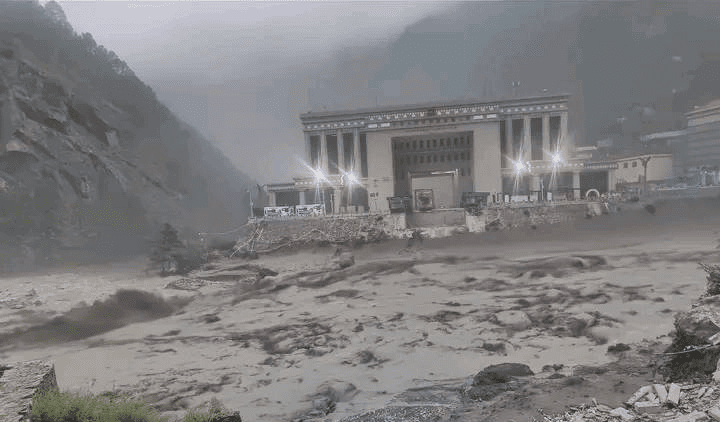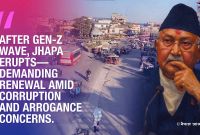China’s Water Devastates Rasuwa: Prime Minister and Top Officials Head to Flood Zone Amid Widespread Damage

Kathmandu — A sudden flash flood in the Lende River, located along the Nepal–China border in Gosainkunda Rural Municipality–2 of Rasuwa district, has triggered national anxiety and outrage. So far, 18 people — including six Chinese nationals — remain missing, while over 50 individuals have been rescued. The Miteri Bridge connecting the two countries has been completely washed away. The dam of the Rasuwagadhi Hydropower Project is severely damaged, the customs yard is submerged, and 7–8 electric vehicles have been swept away.
Experts have raised serious concerns that the flood was not caused by rainfall but possibly due to a glacial lake outburst or an unannounced and careless release of water from the Chinese side. Nepal’s Department of Hydrology and Meteorology has confirmed that there was no rainfall in the Bhotekoshi watershed area in the last 24 hours. Hydrologist Binod Parajuli stated that China’s failure to issue timely flood warnings to Nepal was a key cause of this disaster.
Amid mounting pressure, Prime Minister KP Sharma Oli has announced that he will personally visit the disaster-hit area for on-site assessment. He has suspended all non-essential programs and instructed government agencies to remain on high alert. Home Minister Ramesh Lekhak and Finance Minister Bishnu Paudel are also heading to the affected region via a separate helicopter. The delegation includes all three chiefs of Nepal’s security agencies—Chief of Army Staff Ashokraj Sigdel, Inspector General of Police Deepak Thapa, and Armed Police Force Chief Raju Aryal.
In a coordinated effort by the Nepal Army, Nepal Police, and Armed Police Force, 23 workers trapped at the Rasuwagadhi Hydropower Project were rescued by helicopter. Nine others were safely evacuated from the Timure area. However, 11 rescue personnel deployed for relief operations became trapped themselves due to the fast-moving, debris-filled floodwaters, complicating ongoing efforts.
The flood has completely disrupted the Nepal–China trade route. According to Rasuwa’s Chief District Officer Arjun Paudel, most of the 100–150 vehicles parked at the customs yard have been swept away. The Miteri Bridge, completed in 2019 with Chinese assistance in just five months, has now collapsed within six years of construction—an embarrassing symbol of strategic and structural failure.
The impact of the flood is not limited to Rasuwa. Authorities have issued alerts for downstream regions including Nuwakot, Dhading, and Chitwan along the Trishuli River. Two bodies have already been recovered from the riverbanks in Dhading.
Following the disaster, major political parties such as the Nepali Congress and the Maoist Centre have called on the government to prioritize rescue and relief. Congress leaders have instructed their local organizations to mobilize immediately.
But beyond the physical destruction, the flood has triggered profound diplomatic questions: Is China, a regional superpower, exerting pressure on a smaller neighbor by manipulating water resources? And will Nepal’s government continue its silence in the face of such high-stakes transboundary challenges? In the coming days, satellite imagery and hydrological data may reveal the truth—but like the raging floodwaters, the questions are only growing stronger.




![From Kathmandu to the World: How Excel Students Are Winning Big [Admission Open]](https://nepalaaja.com/img/70194/medium/excel-college-info-eng-nep-2342.jpg)
